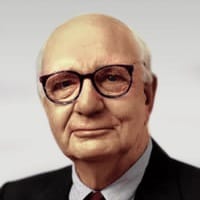Volcker Rule Harms Financial Stability and Economic Growth

 This post is the second in a 3-part series on banking regulation and the Volcker Rule. Read the first post, “Regulators Mull Changes to ‘Volcker Rule’ on Bank Investments,” here.
This post is the second in a 3-part series on banking regulation and the Volcker Rule. Read the first post, “Regulators Mull Changes to ‘Volcker Rule’ on Bank Investments,” here.
The Volcker Rule, established under the 2010 Dodd-Frank Act, looked to ban commercial banks from proprietary trading while also exempting market making and hedging activities (as well as dealing in government securities). But while the nearly 1,000-page rule was designed to flesh these distinctions out carefully, it has been much easier said than done. Instead, the rule’s definition is rather ambiguous, and gives little clarity as to how both regulators and banks should conduct their business. This has resulted in a financial system that is no safer than before, but has lost important services that reduce risk and boost liquidity.
How has the Volcker Rule Been Implemented?
The critical issue with implementing the Volcker Rule is that its current definition makes it just about impossible for a regulator to discern between what is ‘legitimate’ prop trading and hedging or market making. As a result, a regulator would essentially have to guess the intent of the trader when they made a particular trade. As JP Morgan CEO Jamie Dimon joked, under the Volcker Rule, “you have to have a lawyer and a psychiatrist sitting next to you determining what was your intent every time you did something.”
Without a clear operational definition of proprietary trading, it is very difficult for regulators to distinguish between the two. Former investment banker and Bloomberg columnist Matt Levine explains just how hard a task this would be for regulators:
Why would a regulator know better than a bank how many bonds are necessary to satisfy expected customer demand, or what risks a hedge gives rise to, or for that matter what written policies and procedures are sufficient to limit the risks of underwriting and market-making and hedging? There’s no obvious signpost for which activities are reasonable and which aren’t.
Even the rule’s architects have recognized this. The former Federal Reserve governor and point man for the regulation, Daniel Tarullo, accepted that the rule is too complex to enforce properly. This has led much of the charge to review the regulation, with Acting Comptroller of the Currency Keith Noreika recently claiming “A bipartisan consensus has emerged that the Volcker Rule needs clarification and recalibration.”
What Have Been the Effects?
The Volcker Rule is often described as one of Wall Street’s “most despised” regulations. Given the complexity involved with compliance, it is no surprise. Total costs of compliance for Volcker are estimated to cost the industry up to 2.3 million new hours of paperwork and $4.3 billion dollars. Meanwhile, banks have had to wind down their proprietary trading desks without increasing the safety and soundness of the financial system.
The Volcker Rule attempted to target a specific form of prop trading. But with the ability of regulators to interpret legitimate market making or hedging activities as proprietary trading, banks have begun shifting away from both legitimate activities. This has only served to reduce liquidity while discouraging appropriate hedging against risk. As Matt Levine further writes:
It is impossible to conceptually distinguish “prop trading” from “market-making,” so the Volcker rule will make market making more difficult and expensive and reduce market liquidity. It is impossible to conceptually distinguish “prop trading” from “hedging,” so the Volcker rule will make banks less hedged and more risky.
Market making is a crucial function to deep and liquid capital markets. Stifling this function has led investors to seek higher liquidity premiums for bonds issued by smaller firms, making it harder and more expensive for businesses to raise capital. Artificially preventing businesses from raising adequate capital means lower aggregate investment, less production, and lower levels of employment. While aimed at Wall Street, the Volcker Rule has managed to hit Main Street.
Everyday Main Street consumers are also strongly reliant on well-functioning U.S. capital markets, even if they don’t realize it. Credit card debt, student loans, and mortgages are all packaged up into securities and sold throughout the capital markets. Market makers for these kinds of assets keep liquidity flowing through the system and hold down costs for consumers.
Even the Main Street community banks that had nothing to do with causing the financial crisis have been hit. Community banks that engage in hedging the risk of commercial loans have had to wind down many of their operations due to the risk of being labeled as proprietary trading. My colleague and CEI Senior Fellow John Berlau points out one particular causality of this kind:
[T]his week, even the New York Times was compelled to report on the regulation hitting a bank that was about as far away from Wall Street as once could get. “Volcker Rule Quickly Hits Utah Bank,” reads the headline of an NYT article describing how the Volcker Rule forced Salt Lake City-based Zions Bancorporation to divest a long-held debt security and take a loss of $387 million by doing so. As Bloomberg notes in its piece on the shocking hit to the bank’s balance sheet, this “cost is more than Zions earned for any calendar year since 2007.”
While many smaller banks were not the target of such regulation, ‘trickle-down compliance’ has led to many banks spinning off their trading desks. As a study by two Harvard researchers found, “community banks have sold assets simply due to uncertainty” as a result of the rule. While bigger banks can hire the best lawyers to devise ways of subverting the rule, smaller institutions cannot risk such uncertainty at the hands of regulators. It does a small firm no good to make a perfectly legal trade if it will bring more regulatory scrutiny and possible litigation.
Instead of improving the safety of financial institutions, the Volcker Rule actually restricts the ways in which banks can reduce risk. Banning proprietary trading limits the opportunities banks have to hedge their risks, reduces the amount of capital available in the market and restricts the ability of banks to deal with liquidity shocks. This only amplifies volatility and increases the likelihood of banks seizing up during a panic.
Both the Financial CHOICE Act and the OCC’s plan to revisit the Volcker Rule is a common-sense measure that, if reformed correctly, could provide relief to financial institutions, consumers, and investors alike. In the next post I will look at the various options that regulators and Congress have for reforming the Volcker Rule.
This post is the second in a 3-part series on banking regulation and the Volcker Rule.